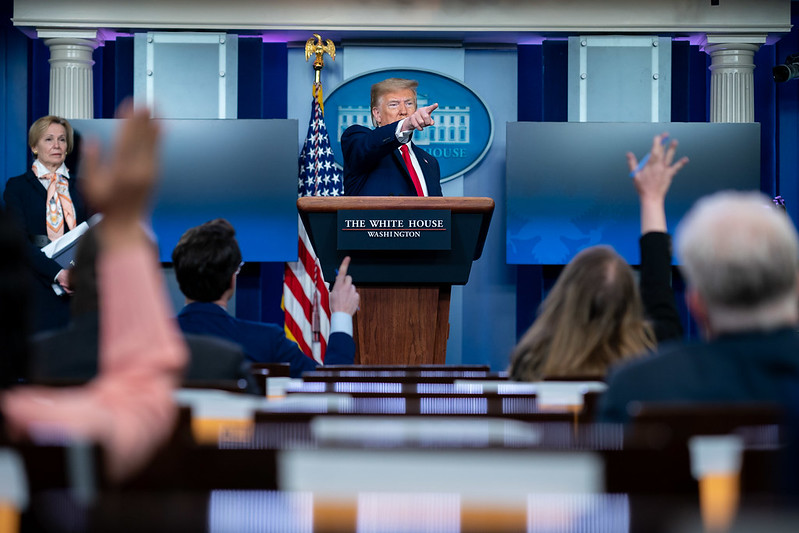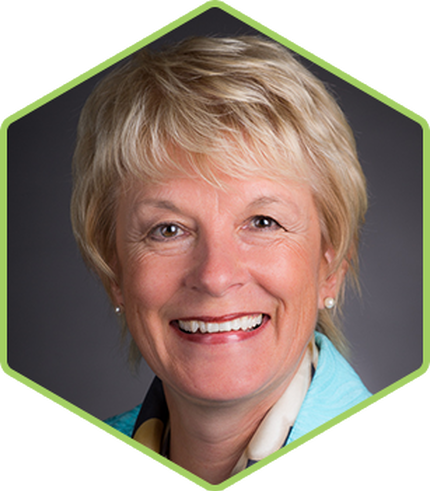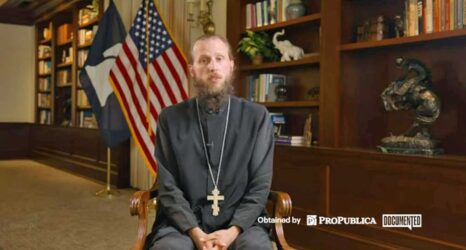“What I want to know is: Where are the women?” asked Rep. Carolyn Maloney (D-N.Y.) before walking out on an all-male opening panel in a 2012 congressional hearing on contraception coverage in Obamacare. “I look at this panel and I don’t see one single individual representing the tens of millions of women across the country.”
Fast forward to 2020—and Maloney’s question still resonates.
President Trump announced his “Opening Our Country Council” last week—with 220 men and a paltry 20 women.

Of the council’s 16 business and industry categories ranging from agriculture to transportation—along with a single “thought leader” group tacked on—41 percent have zero females.
The largest roster, health care, has 27 men and two lone women.
None made the list in the second highest group, food and beverage.
Women’s representation is highest in the defense category at 40 percent. Sounds pretty good—until you realize it’s the smallest group, with only five members total.
The most obvious “anyone but the girl” pick is LPGA Commissioner Michael Whan—chosen to represent the nation’s premier women’s golf organization in the sports category. Trump bypassed LPGA Board Chair Diane Gulyas, a former senior executive at DuPont, in favor of Whan, an employee with a courtesy board appointment.

Further stacking the deck in favor of the boys, the construction/labor/workforce category includes five “men’s unions” like the Teamsters and Building Trades—with all male reps, naturally—while snubbing the nation’s largest union, the female-dominated National Education Association and its president, Lily Eskelsen García.
But enough about the numbers. As the so-called industry titans on the council would say, let’s get to the bottom line: In terms of women’s representation, the Trump administration has constantly underperformed, and this new council is no exception.
Anyone who’s surprised by this pitiful performance just hasn’t been paying attention. Except for the Trump’s daughter, Ivanka Trump, women are mighty scarce in the White House overall. The cabinet consists of 19 men and four women.
When the president announced the White House Task Force on Coronavirus on January 20, the all-male cast featured a dozen white guys. It took a month for him to add Dr. Deborah Birx—who held the female fort alone for another 30 days until Seema Verna was tacked on, along with two African American men. Birx continues to be the token woman in the midst of a phalanx of white guys on TV. Verna went before the cameras briefly in March, but has been mostly AWOL since her most recent appearance at Sunday’s press briefing.
In defense of the male dominance of the council list, many will say the near-invisibility of women just reflects reality. After all, the “Opening Our Country Council” is mostly about business, and men dominate the highest perches in corporate America. But the “not enough qualified women” excuse is just that—an excuse.
Zooming out, research led by Northwestern University shows the crisis is hitting women particularly hard. They’re more likely to lose their already lower-paying jobs, and struggle with child care as kids are sent home from school. And domestic violence hotlines are lighting up with significant upticks in abuse cases as families remain on lockdown.
So to get back to the original question: “Where are the women?” Right now they’re out of work, stuck at home worrying about how to feed families, getting the hell beat out of them, or risking their lives on the front lines in hospitals trying to stop the virus.
But let’s hope come November the women will remember and be somewhere else: lined up at the polls.
The coronavirus pandemic and the response by federal, state and local authorities is fast-moving. During this time, Ms. is keeping a focus on aspects of the crisis—especially as it impacts women and their families—often not reported by mainstream media. If you found this article helpful, please consider supporting our independent reporting and truth-telling for as little as $5 per month.
You may also like:





